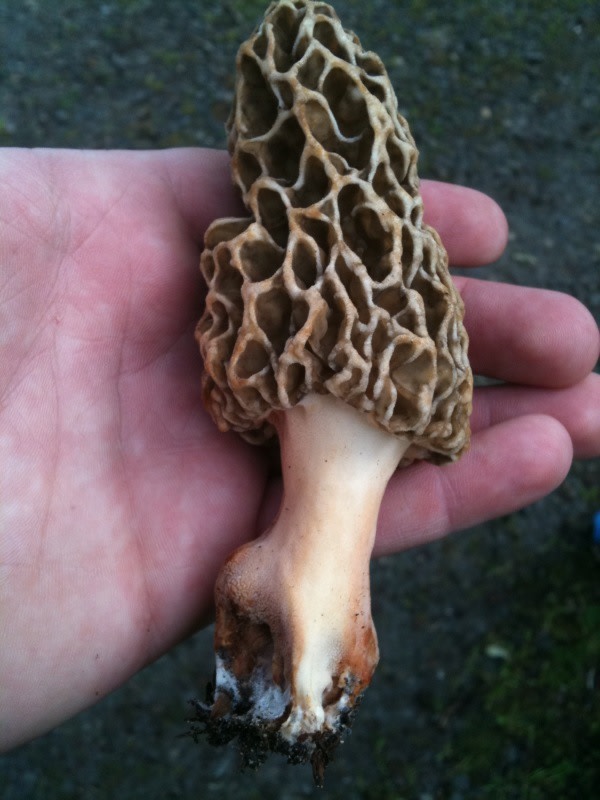Mushroom Hunting

A morel I found in Portland this past weekend
Image: Emma Hall
Gardeners know that there isn’t anything more satisfying than growing your own plants, caring for them and raising them, and then harvesting the fruits of your labor to eat or cook with.
A similar experience can be had with foraging for mushrooms, minus the months of growing, watering, and caring for your plants. Luckily Portland is the perfect place to find these delicious edibles.
Location: There are plenty of areas near—and even in—Portland to go mushroom hunting, but don’t expect to find any specific directions. Mushroom hunters like to guard their sources, but half the fun is the hunt anyway, so don’t be discouraged. Simply go to a local wooded area (not someone’s private property though!) and walk around slowly looking at the ground. Don’t worry if you don’t find a big haul on your first try!
One piece of advice on location is to make sure where you are going you have the right permits: either for simply parking in the area or even a mushroom gathering permit which is required in some areas. For more information, you can call the local Forest Service.
What to bring: Make sure you wear long pants and long sleeves, since you’ll be climbing around amidst briars and—ouch—stinging nettles. Comfortable walking shoes are a given. Bring something to protect your finds, such as paper bags (plastic bags will create a mushy mess by the end of the day) or wax paper, and a basket to put the mushrooms in so they don’t get crushed. A pocket knife can be handy for slicing your mushrooms in half to study them. And don’t forget to bring a mushroom identification guide! All That the Rain Promises and More by David Arora, is a great pocket-sized one that’s easy for beginners to use.
What to look out for right now: Two common spring mushrooms to find in the area are oyster and morel mushrooms.
Oyster mushrooms are found growing in clusters on trees, stumps, and logs. They are primarily white/tan with firm flesh and white gills. There are no lookalikes to worry about, though some people think they look vaguely similar to Crepidotus mollis, an unedible mushroom. These mushrooms are so delicious that they are commonly grown commercially now, but why spend money at the grocery store when you can go forage your own for free?
Another ‘shroom to be on the lookout for right now is a morel. This one is a little trickier for beginners to identify, but don’t worry, as there are clear differences between morels and the similar looking “false morels.” False morels are “uglier” than morels, but the clearest difference is seen by slicing the mushroom in half: an edible morel will be hollow, with the stem attached all the way along the cap, while a false morel has a solid stem that is only attached to the cap at a few points. For much more information on identifying morels, check out The Great Morel.
You can find morels growing out of damp ground—often you’ll have to get down on your hands and knees and brush away dead leaves, since they are very good at blending in with the leaves. While walking around looking at the ground, make sure to look up sometimes too: morels tend to grow near elm, sycamore, and ash trees (though they can be found almost anywhere: this last weekend I found one growing just a couple inches away from a paved pathway, right out in the open!)
If you are interested in learning more, I’ve found the Oregon Mycological Society to be very helpful (and friendly!) They have monthly meetings where you can learn more about local mushroom hunting, and you are encouraged to bring in your specimens to have others help you identify them. While I have to warn you not to eat a mushroom you cannot identify, bring along a friend that knows what they’re doing or your reference books and stick to the basic mushrooms for your first time, and you’ll be just fine. Just get out there and search for delicious local mushrooms, I can guarantee you’ll become addicted to the hunt.




